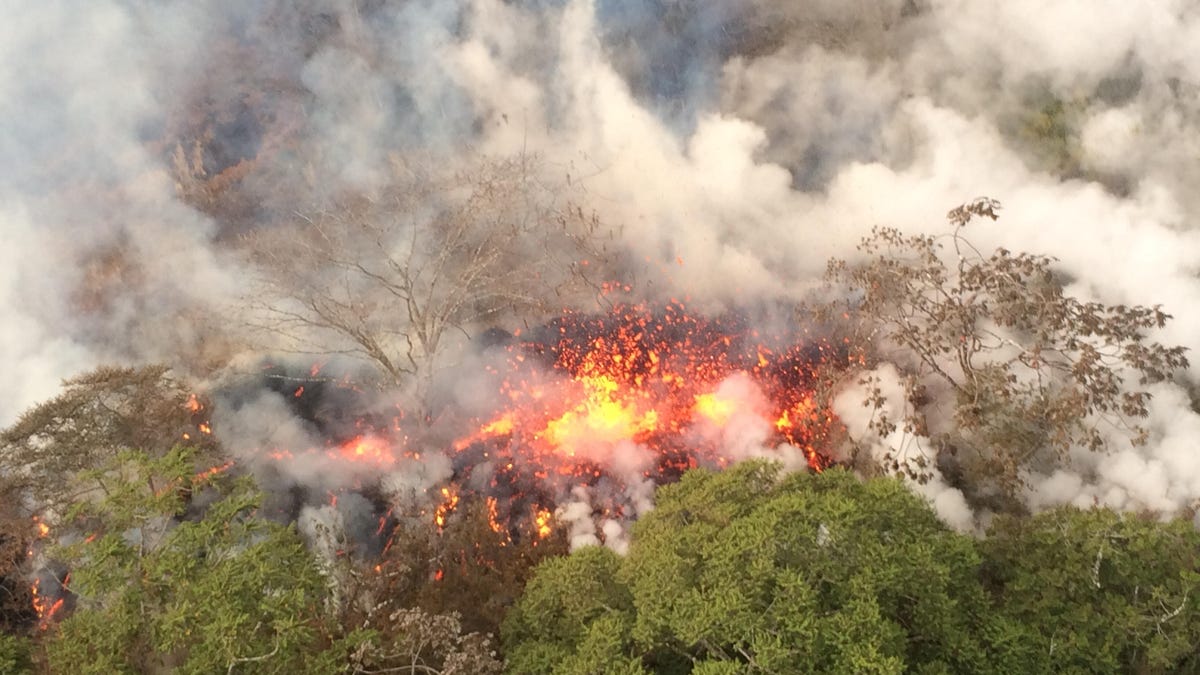Hawaii volcano kicks ballistic rocks onto 'moonscape'
As if ash and lava aren't enough.
The activity at Hawaii's Kilauea volcano is getting more interesting and more ominous.
Since the latest eruption started on the big island, on May 3, the United States Geological Survey has been monitoring the danger and updating us with some devastating imagery on social media. One of the latest shots is a view of a "moonscape" with a massive rock in the middle.
Looks like a moonscape at the old Halema‘uma‘u parking lot; rock and ash from the explosive event last evening, May 15, Kīlauea summit. https://t.co/yEUJFxRqfC pic.twitter.com/syCe7ruqSw
— USGS Volcanoes🌋 (@USGSVolcanoes) May 17, 2018
That rock was hurled from the volcano's Overlook crater and landed in an ash-covered parking lot. The USGS estimates the rock was about 2 feet (0.6 meters) across before it broke up on impact.
A USGS update on Wednesday describes "dense ballistic blocks" and warns, "Additional such explosions are expected and could be more powerful."
There's a lone webcam operating at the Hawaii Volcano Observatory's evacuated observation tower. It caught sight of an explosive eruption on Thursday morning at Kilauea's summit. This generated an impressive ash plume that looks like thick rain.
Webcam image from HVO Observation Tower of ash plume from this morning's explosive eruption at Kīlauea Volcano's summit. https://t.co/lV7HjT956l pic.twitter.com/8QEqFrWNsY
— USGS Volcanoes🌋 (@USGSVolcanoes) May 17, 2018
The USGS issued a new volcanic activity notice Thursday morning, saying the ash cloud from the most recent explosion reached as high as 30,000 feet (9,100 meters) and that the volcano could produce more ballistic projectiles at any time.
The ongoing eruption has forced residents in the lava-flow zone to evacuate as a series of fissures spread across the land, spitting out molten rock and gases. NASA satellites and astronauts have also been keeping an eye on Kilauea, which could continue erupting for quite some time.


